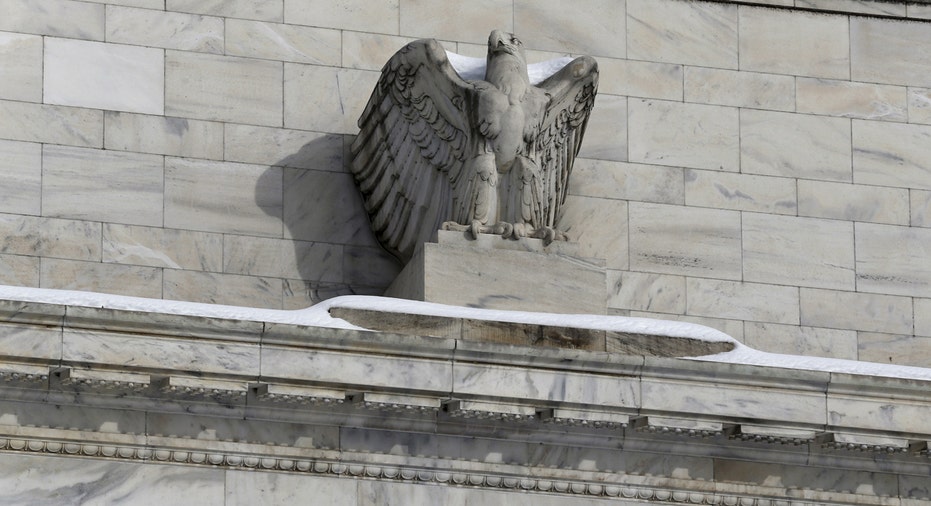Dovish Fed Not Enough to Quell Wall Street Worries

The Federal Reserve’s decision to keep its benchmark interest rate unchanged following a two-day policy meeting in January was met on Wall Street with fairly negative reaction after markets had about an hour to digest the news.
The S&P 500’s financial sector, which had seen gains of nearly 0.4% before the Fed’s statement, dipped into negative territory, declining more than 0.5% by the closing bell. Part of the steep losses on major averages, though, was also due to a drop in the technology sector, the biggest decliner on the session, after Apple (NASDAQ:AAPL) earnings disappointed investors.
Chris Gaffney, president of World Markets at EverBank said the statement, while dovish, didn’t go far enough to quell the market’s concerns.
“The markets would have liked to have seen the Fed definitely remove March (as a possible rate hike month), or say something about the four rate increases they said are going to happen in 2016. The statement didn’t do either of those,” he said.
In its statement, the Fed said while labor market conditions and the housing sector have improved over the last month, economic growth had slowed over the last year. The central bank directly cited soft net exports and inventory investment, as well as energy declines that have impacted its 2% inflation target.
“Inflation is expected to remain low in the near term, in part because of further declines in energy prices, but to rise to 2% over the medium term as transitory effects of declines in energy and import prices dissipate and the labor market strengthens further,” the Fed said in its statement.
Recent data show a bit of uncertainty around the inflation picture. Survey-based indicators from the Labor Department, including the consumer price index (CPI), which outlines inflation at the consumer level, and producer price index (PPI), showing inflation at the wholesale level, have come in above the Fed’s 2% target.
For example, CPI excluding volatile food and energy components, was up 2.1% over the last 12 months, while the central bank’s favored personal consumption expenditures index (PCE), stripped of food and energy, increased 1.3% from a year ago.
Notably, the Fed also called out global economic concerns that have roiled the world’s markets during the first month of the year. After a period of volatile days and extreme price swings in the U.S., the major averages have shed well north of 7% so far for the year, with the Nasdaq recording the most substantial losses of 10%.
Declines have been exacerbated by fears of China’s slowing growth and to what extent it could bleed into the U.S. economy.
“The committee is closely monitoring global economic and financial developments and is assessing their implications for the labor market and inflation, and for the balance of risks to the outlook,” the statement read.
Phil Orlando, senior vice president and chief equity strategist at Federated Investors, said the statement’s reflection of global economic conditions was the most compelling.
“It seems as if the Fed has, in their own words, come off the perception that the market had, that they were on a pre-ordained path for four rate hikes over the course of this year,” he said. “They left the impression that it was a more data-dependent decision and one or two more hikes might be more appropriate.”
Orlando pointed to the U.S. equity market reaction following the Fed’s September statement in which it said rates would remain unchanged at the historic, near-zero level. Wall Street had priced in the first rate hike for that month, and did not anticipate the central bank putting the first rate rise on hold. In response, stocks saw substantial losses on the session.
This time, the Fed’s intentions, he said, were better telegraphed to the market.
“If it was the right decision for the Fed to hold off on hiking because of China concerns in September, it’s equally as right of a decision now because we’re dealing with the same kind of issues, concerns and instability,” Orlando said. “In my mind, the combination of what’s going on in China and what will likely be a weak 4Q GDP reading is enough to keep the Fed in place at the next meeting in March,” Orlando said.
Initially, the markets took that addition to the statement as a dovish sign, but Gaffney said Wall Street was hoping for more.
“As they digested the full statement, it’s become apparent investors just aren’t satisfied with the Fed and believe that rate increases are still on the table,” he said.
Like Orlando, Gaffney believes the January statement “definitely” scaled back the likelihood of a March rate hike.
“The real story is surrounding their ‘message to the markets’ in which they needed to walk a fine line between confirming their confidence in the U.S. economic recovery, but still letting the markets know they are cognizant of the fragile state of the global economy,” he explained.
He pointed out the Fed opted to remove language that the risks to the economic outlook are balanced, instead adding language that they are “closely monitoring global economic and financial events.”